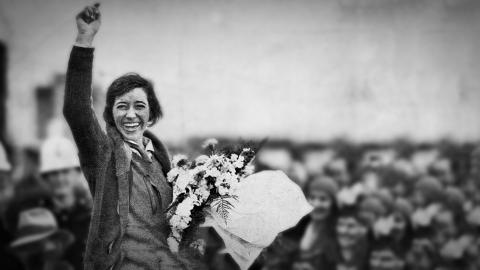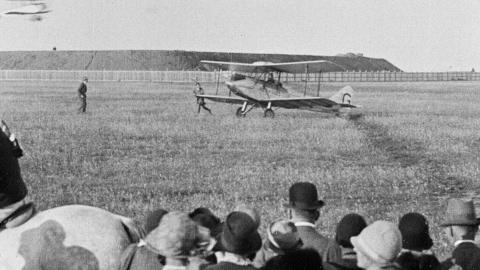
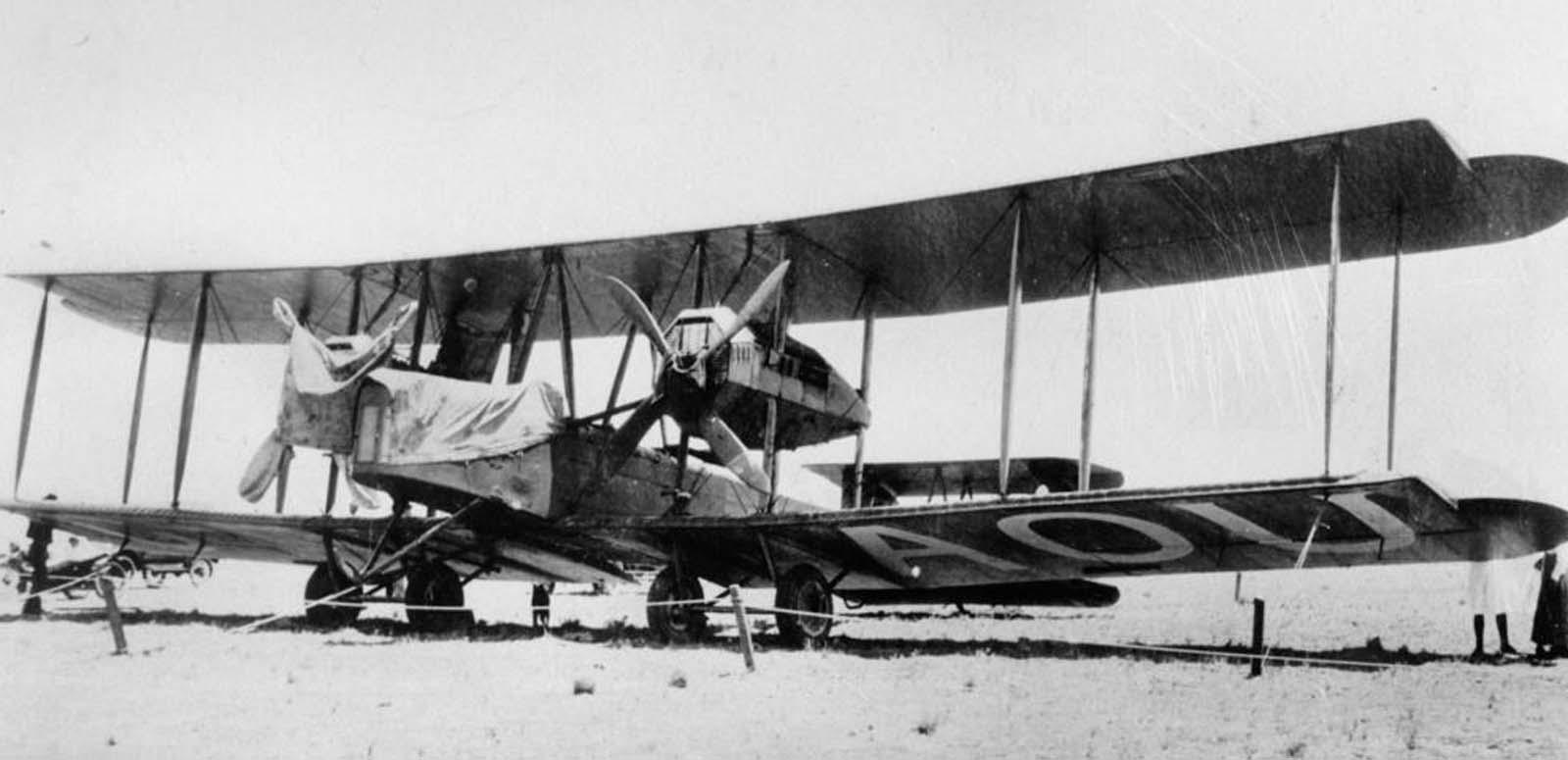
Our heroes of the air
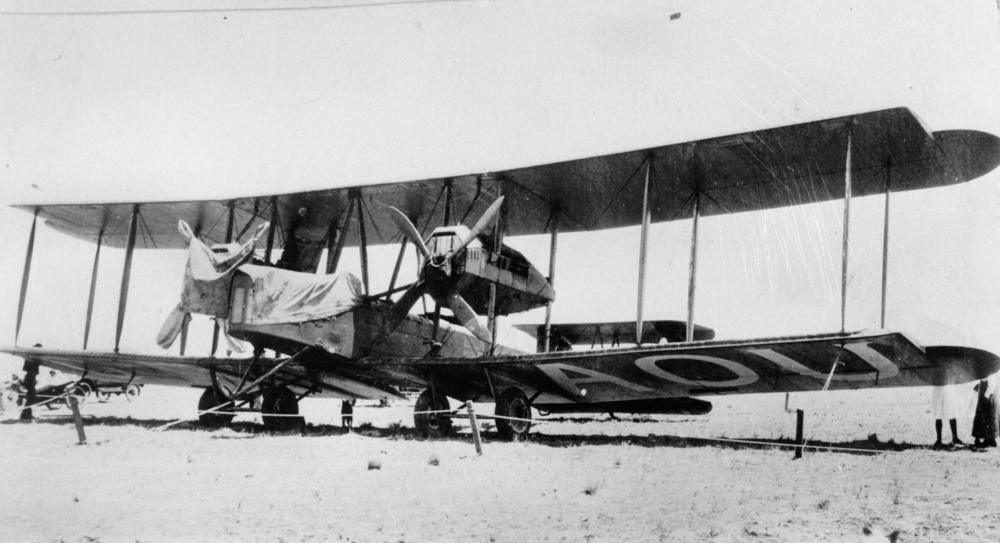
The Vickers Vimy flown from England to Australia by the Smith brothers in 1919. Courtesy John Oxley Library, State Library of Queensland
The decade after the end of the First World War was a period of great excitement in aviation and this was reflected by the popularity of aviator songs. The acceleration of technical advances in aircraft design and the end of the war led to more aircraft being available for civilian use. The geographic isolation of Australia meant that air travel was appealing as an alternative to weeks of travel on a ship and in 1919 the Australian government offered a prize of £10,000 for the first flight from England to Australia in less than 30 days.
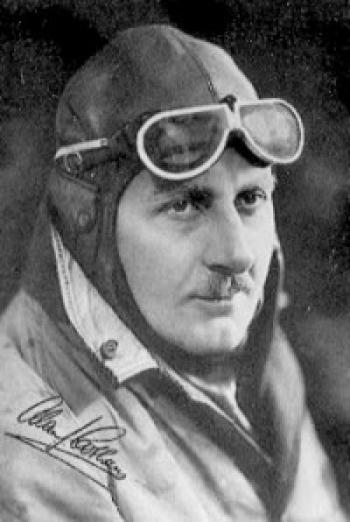
The prize was won by South Australian brothers Captain Ross Smith and Lieutenant Keith Smith KBE, who together with their mechanics Sergeant WH Shiers and Sergeant JM Bennett flew a Vickers Vimy bomber from Hounslow (near London) to Darwin in under 28 days. While we don’t know of any recordings made by the brothers at the time, there was a song written in celebration of their achievement: Our Flying Boys, written by E Ronchetti-Allin and Jack Fewster. The National Library has a copy of the sheet music, but no recordings made of it have been found.
Alan Cobham
In 1926 the English pilot Alan Cobham and co-pilot Arthur Elliot set out from England to fly to Australia and return in a De Havilland DH-50. The plane was fitted with floats rather than a wheeled undercarriage to enable it to land on water, which Cobham thought a more practical approach. Once the aircraft reached Darwin the floats were exchanged for wheels for the final section of the flight to Melbourne. Tragically the aircraft had been shot at by tribesmen over Iraq and Elliot was fatally wounded. Cobham was able to find a replacement in Basra to continue the flight and when he returned to England recorded a disc for the Edison Winner Record label describing his flight.
To Australia and Back in Six Minutes – Sir Alan Cobham. Edison Bell Winner Record 4525 (NFSA 409121)
Bert Hinkler
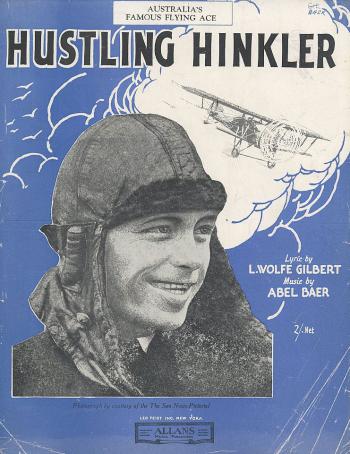
What had yet to be achieved was a solo flight from England to Australia. Australian flyer Bert Hinkler had to abandon his 1920 attempt in Rome because of political unrest in the Middle East. By 1928 he had acquired a larger aircraft – an Avro Avian – and set off, more or less in secret, from London on 7 February. By the time he reached Darwin, 15 days later on 22 February, he was a national hero and shortly after made a recording for Columbia talking about his flight and aviation in general. Apart from Hinkler’s own recording (included in the Sounds of Australia) at least half a dozen popular songs and dance tunes were written in his honour. Hustling Hinkler was written by L Wolfe Gilbert and Abel Baer and recorded by Len Maurice for Columbia and Fred Monument for Parlophone within weeks of Hinkler’s arrival in Australia. Hello! Hinkler was written by Larry Conley and Dave Silverman and this recording was also available by March 1928.
Hustling Hinkler sung by Len Maurice. Columbia 0954 (NFSA 191192)
Hustling Hinkler sung by Fred Monument. Parlophone A 2418 (NFSA 312290)
Hello! Hinkler sung by Frederick George. Regal G20151 (NFSA 190545)
Following Charles Lindbergh’s solo flight across the Atlantic in 1927, the last great challenge was crossing the Pacific. Flying from Europe to Australia, although a long and hazardous journey, could be done mostly over land, with only a few relatively short sections over water. Flying from America to Australia was a different proposition as Hawaii and Fiji, the only practical refuelling stops, required very accurate navigation to find in the middle of a very large ocean.
Charles Kingsford-Smith
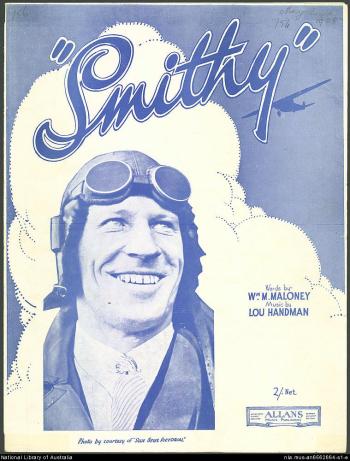
Australian pilot Charles Kingsford-Smith had tried to enter the 1919 race to fly from England to Australia, but had been prevented from doing so by his perceived lack of navigational skills. Nevertheless he spent most of the 1920s flying in Australia, setting up small airlines and charter services and, with Charles Ulm, flying around the coastline of Australia in a little over ten days. The publicity from this flight enabled them to raise the money to buy a Fokker VIIb-3m Tri-Motor aircraft in the US which had the range for the critical 5000 km Hawaii-to-Fiji leg of their flight. On 31 May 1928 the Southern Cross took off from Oakland, California with Kingsford-Smith and Ulm at the controls and two Americans, navigator Harry Lyon and radio operator James Warner, making up the crew. They landed in Brisbane on 10 June after more than 83 hours of actual flight time. A crowd of over 15,000 greeted them on their arrival. A week later Kingsford Smith and Ulm recorded a disc for Columbia talking about the trip. The manufactured discs featured Kingsford-Smith’s signature in the centre of the record.
The Southern Cross Trans-Pacific Flight/ San Francisco to Sydney – Charles Kingsford-Smith. Columbia 01150 (NFSA 267484)
The Southern Cross Trans-Pacific Flight/ San Francisco to Sydney – Charles Ulm. Columbia 01150 (NFSA 267484)
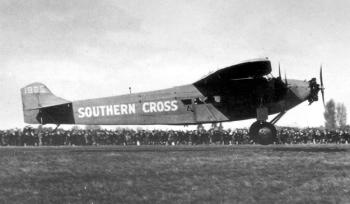
The next year, the Southern Cross made a flight from Australia to England. Kingsford-Smith, Ulm and one of the other crew (the radio operator, either HA Litchfield or TH Williams) made a recording in the cockpit shortly before take-off, and this was released as a single-sided disc with an embossed, handwritten message from Kingsford-Smith and Ulm on the back of this disc.
Inevitably, the songwriters of the period churned out songs about Kingsford-Smith’s exploits. Many were recorded, often with adulatory songs on both sides of the disc.
Southern Cross Australia-England Flight – Charles Kingsford Smith & Charles Ulm. Columbia 01435 (NFSA 267485)
Kingsford Smith, Aussie is Proud of You / Smithy – Len Maurice. Columbia 01140 (NFSA 188215)
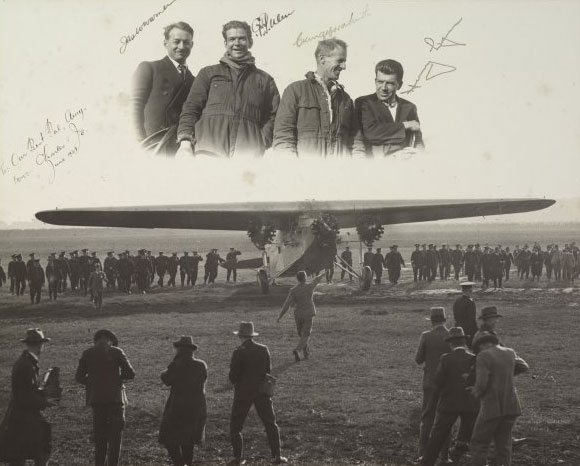
The arrival of The Southern Cross in Sydney. Courtesy National Library of Australia nla.gov.au/nla.pic-an24664462
Smithy / Heroes of the Air – Fred Moore. Capitol A 2484 (NFSA 283771)
Smithy The King of the Air / The Southern Cross Monologue – Clement Williams. Columbia PRX44 (test pressing) (NFSA 751159)
Amy Johnson
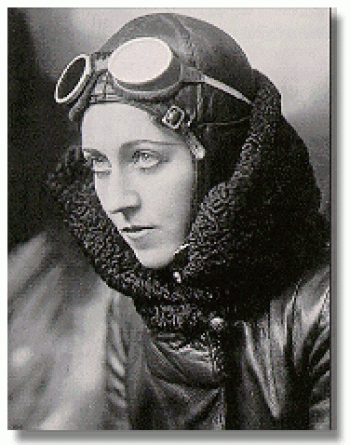
In 1930 the public’s imagination was captured by a young female pilot, Amy Johnson, who flew solo from England. She took off from Croydon on 5 May and landed in Brisbane less than three weeks later on 24 May in her De Havilland Moth. What made her accomplishment all the more impressive is that she had only received her pilot’s licence the year before and had not previously made a flight of more than two hours. She made several record-breaking flights in the 1930s and was killed in 1941 while delivering a new plane to an air force base. She too recorded a memoir of her trip and her arrival in Australia stimulated another round of songwriting.
The Story of My Flight – Amy Johnson, CBE / Johnnie, Our Aeroplane Girl sung by Jack Lumsdaine. Columbia DO-50 (NFSA 290453)
A Lone Girl Flier / Just Plain Johnnie (Jack O’Hagan) sung by Bob Molyneux. Embassy 8097 (NFSA 291532)
Popular Aviator Songs:
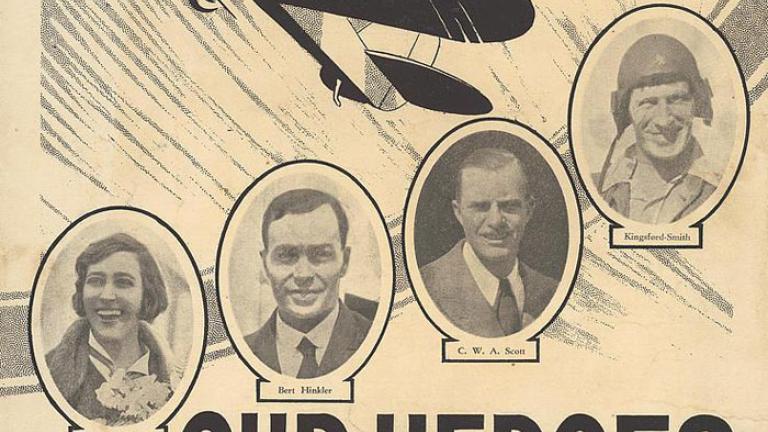
One of many aviation themed songs of the 1930s. We don’t know if this one was ever recorded. Courtesy National Library of Australia.
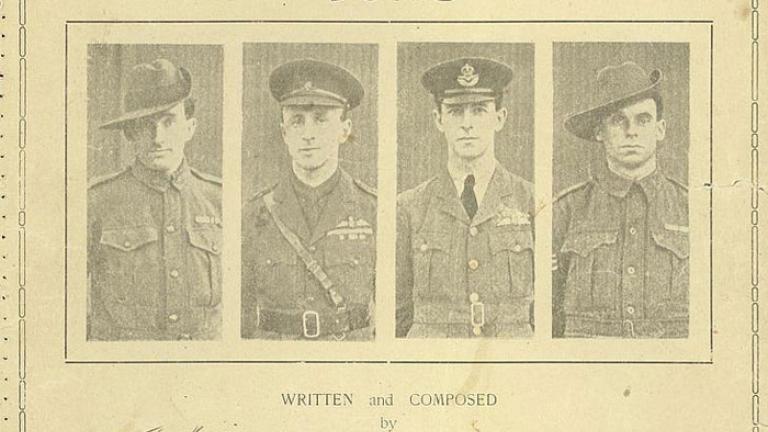
A song dedicated to the crew of the Vimy. Courtesy National Library of Australia.
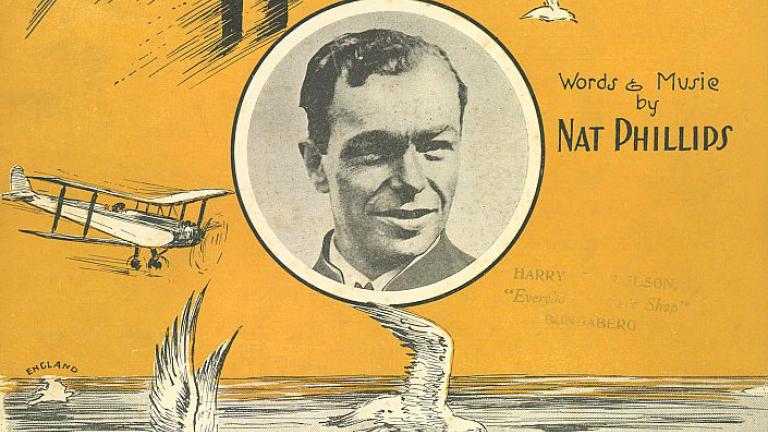
Some of the songs about Bert Hinkler. Courtesy National Library of Australia.
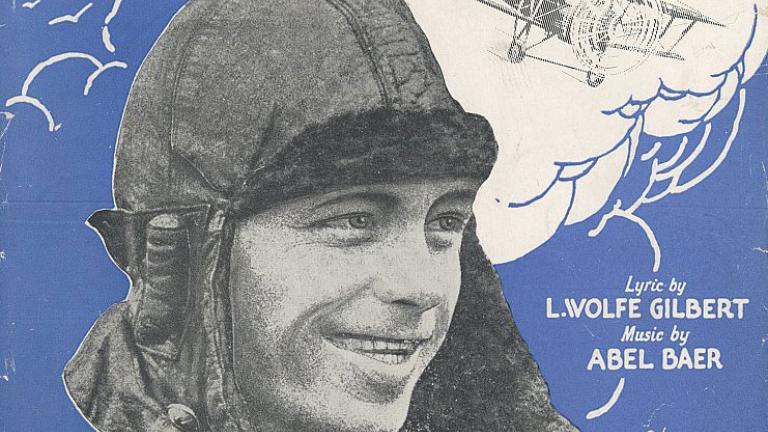
Some of the songs about Bert Hinkler. Courtesy National Library of Australia.
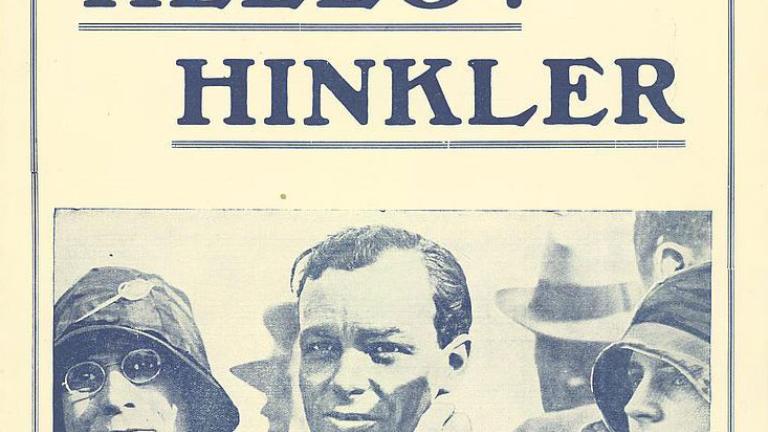
Some of the songs about Bert Hinkler. Courtesy National Library of Australia.
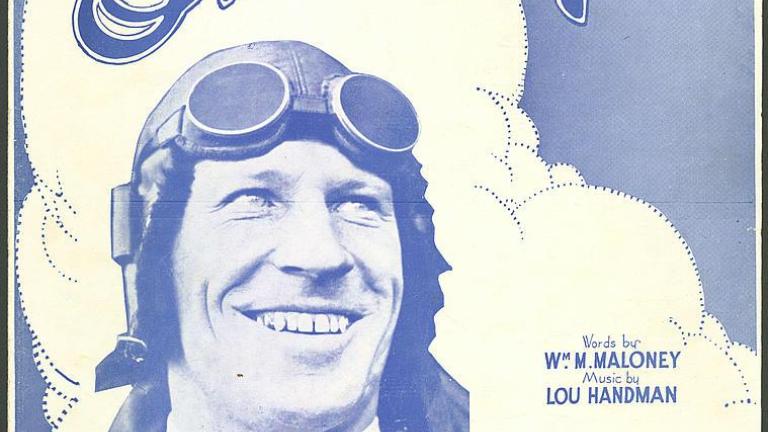
One of the many songs about ‘Smithy’. Courtesy National Library of Australia.
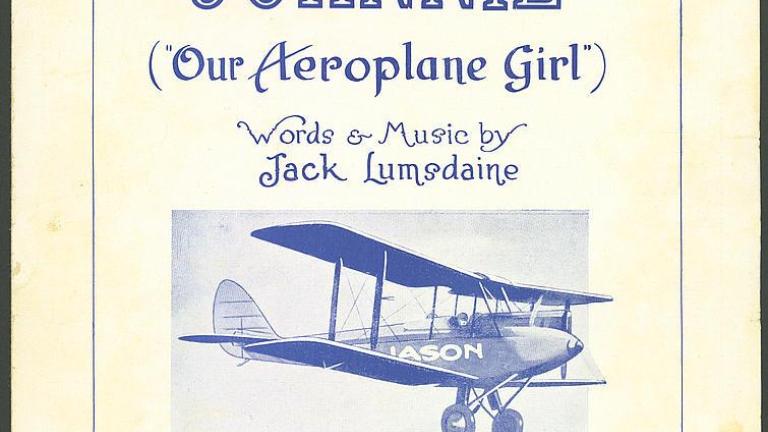
One of the songs about Amy Johnson. Courtesy National Library of Australia.
The National Film and Sound Archive of Australia acknowledges Australia’s Aboriginal and Torres Strait Islander peoples as the Traditional Custodians of the land on which we work and live and gives respect to their Elders both past and present.
